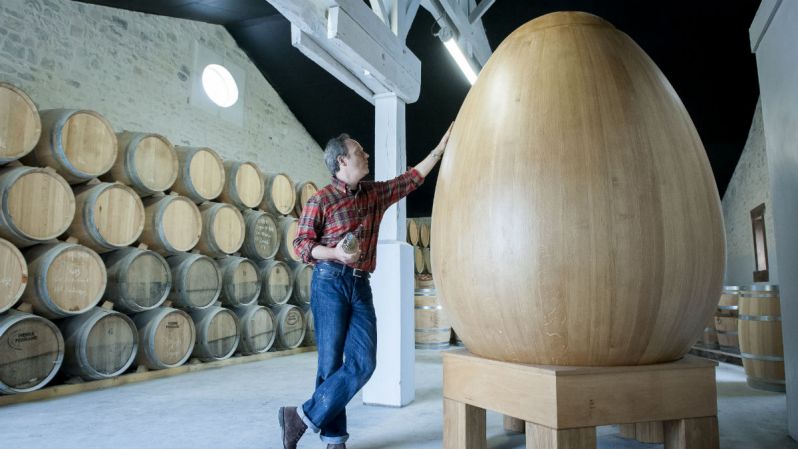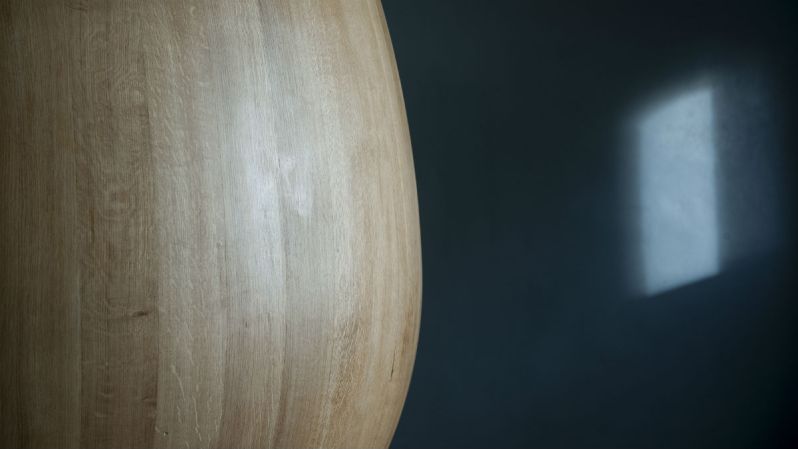
Gin is typically an unaged spirit. However, for a few years now, distillers have been letting their juniper botanical batches relax in wooden casks, much like a fine whiskey — hence the recent rise of barrel-aged gins. Other than a difference in flavor, these gins are characterized by a golden, straw-like color as opposed to the original clear.
This artisanal process of resting gin was spearheaded by French gin maker Citadelle. In 2008, its creator, Alexandre Gabriel, released Citadelle Réserve, a modern-day aged gin matured in wooden casks. In its current iteration, Citadelle Réserve is aged in five different barrels, then completed in a bizarre, 8-foot wooden egg.
Citadelle Réserve marked the first aged gin in nearly a century. It’s safe to say, Gabriel lit the spark that set off the renaissance of aged gin. (We’ve even seen fellow non-aged spirits like vodka and tequila being sent to the barrel for a timeout.)
But back to this 8-foot egg.
Today, Citadelle is the only French distiller in history to use this yolked-up cask method, which has the potential to redefine the aging process. After Citadelle Réserve ages for five months in these five different wooden barrels — acacia, mulberry, cherry, chestnut, and French oak — the gin is blended together and put into the egg-shaped oak barrel, where the spirit is kept in slow, perpetual motion.
This final step gives the product its light color and elegant, smooth texture. The egg also intensifies the citrus notes of Citadelle Réserve Gin and creates a softness in the mouth. Hello, classic gin martini.
Citadelle makes use of 19 botanicals like star anise, almonds, cardamom, violet, fennel, and others, plus three extra: yuzu, cornflower, and genepi. The taste, good lord, the taste. We bet you’ve never sipped a gin with this aroma and complexity, but stays true to its juniper origins.

Gabriel says his passion has always been reviving complex gin production methods from the past, so there’s no wonder he went after a barrel-aged gin. Centuries ago, glass was too fragile and expensive to house gin, and plastic and stainless steel weren’t options yet, so product was transported in wooden barrels. Citadelle’s egg design is a modern (and patented) take on the tradition (sorry, Bombay).
While “barrel-aged gin” still isn’t defined by the United States Alcohol and Tobacco Tax and Trade Bureau (the three categories are Distilled Gin, Redistilled Gin, and Compounded Gin), the trends continues to grow. Citadelle Réserve Gin has attracted acclaim from the San Francisco Spirits Competition, World Spirits Award, and Gin Masters, to name a few.
It really is egg-celent. (Sorry, we couldn’t help ourselves.)





